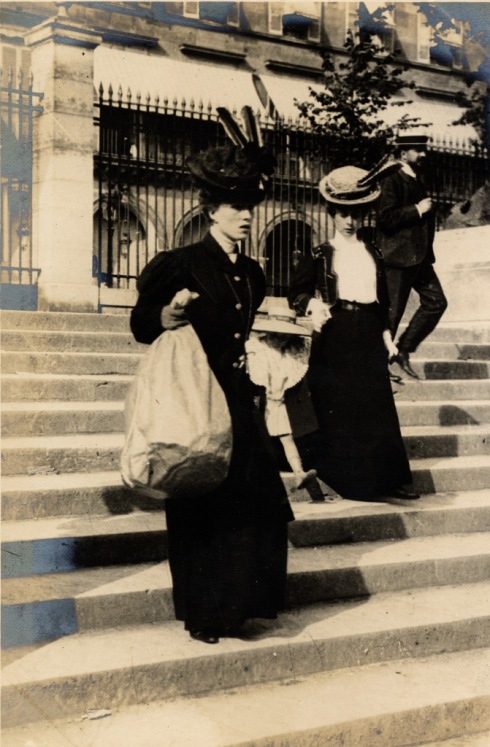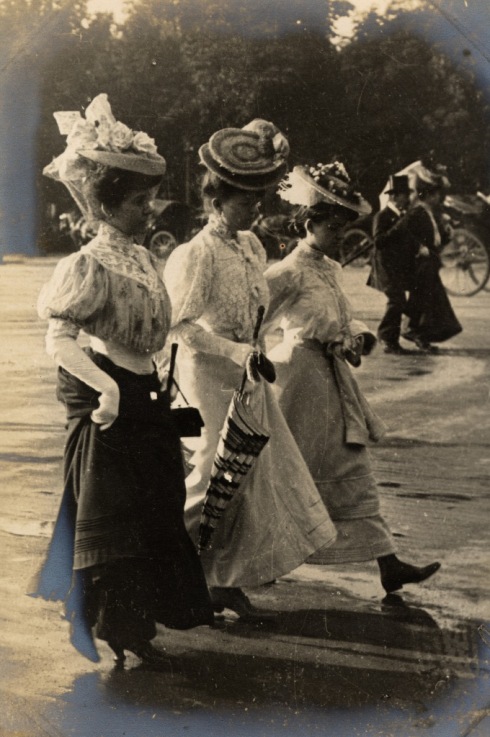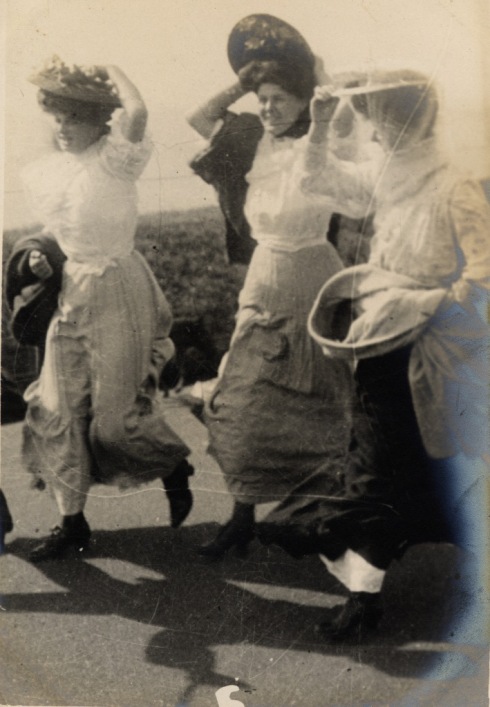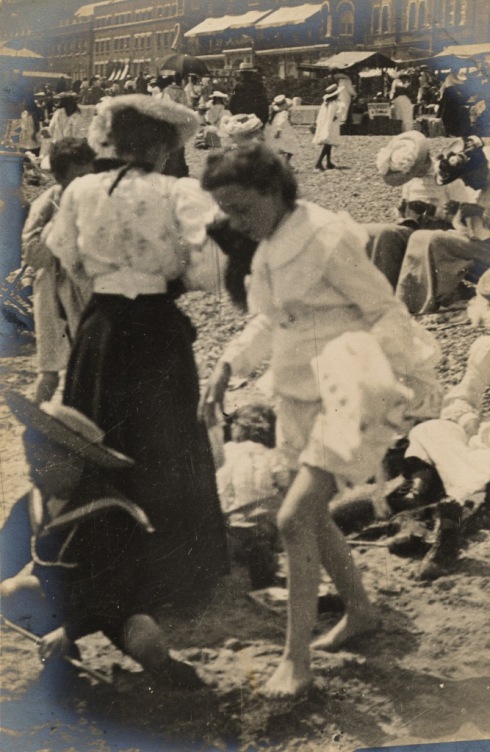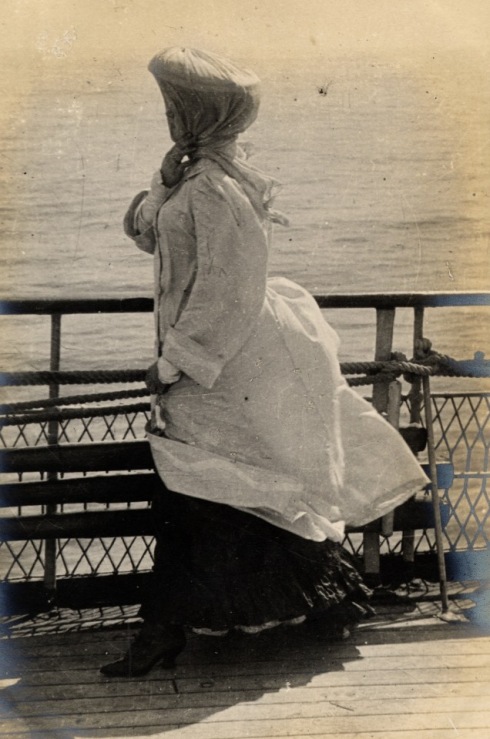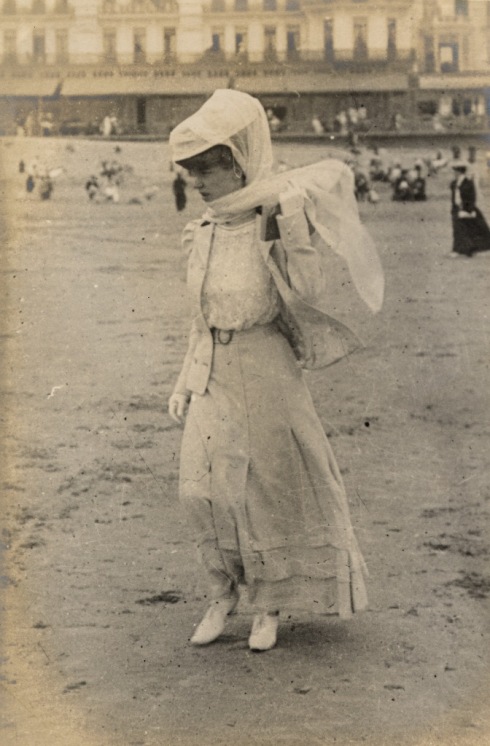Now the weather is warmer and we’re in the serious summer, we can relax a little and revisit an old friend, the artist and illustrator Hugh Thomson. Along with his annual “big books” with colour pictures, a couple of which we’ve already looked at, he also had some regular jobs which kept the wolf from the door. One of those was the Highways and Byways series. These were travel books of British counties, informative but chatty, written and illustrated by a variety of authors and artists. Thomson worked on several books in the series but the one of most interest to us is Highways and Byways of London, published in 1902 with a text by Mrs E T Cook (Emily Constance actually, don’t know where the T came from.). Some of the illustrations were by the leading engraver F L Griggs, who tended to do the sober pictures of streets and churches. Thomson concentrated on the life of London and particularly its people.
Here’s a typical London scene, someone giving some directions.
![Sightseers]()
Third left, second right, You can’t miss it. Thomson captures the confidence of the policeman, the confusion of the older man and the anxiousness of the mother and daughter attempting to follow the complex instructions.
They might be forgiven for taking the tube instead.
![An Underground Station]()
Except that it looks a bit frantic down there. This is clearly one of London’s defining characteristics as Thomson saw it. In his London there seems to be quite a bit of rushing about.
![The Hansom]()
The picture is called The Hansom, but the focus is on the brisk young woman who is threatening to overtake the horse drawn carriage.
The other main theme for Thomson is fashion. In an interview with Raymond Blathwayt in 1901 he said: “I think the last two years rival the costume of Gainsborough’s time. For the book on which I am now at work I went up to the Row several times to make sketches, and I said to a friend: why doesn’t some big painter make a picture of this? Women catching up their gowns just as Japanese women do and wearing Gainsborough hats; why, they are full of charm, and if properly groupes, such a picture would make a great sensation.”
Thomson’s favourite period for women’s dress was the 18th century, and perhaps the early 19th (which you can see in other posts here and here) He had come to admire contemporary fashion almost as much. See some pictures of the Row later.
Below, a pair of fashionable young women cast a sidelong glance at an older lady walking a tiny dog.
![Crossing at Piccadilly Circus]()
Below, another pair in fashionable outfits at the front of the crowd at a popular exhibition.(No timed entry in those days by the looks of it.)
![At the Royal Academy]()
Another good spot for seeing the latest trends was Regent Street. This group are crowded around the windows of one of the high class establishments. (Compare it with one of the pictures featuring Regent Street in this post about Yoshio Markino.)
I wonder what the woman at the rear of the group is looking at? Something going on in a first floor window?
![In Regent Street - Copy]()
I originally intended, as I have with other travel books, to quote relevant passages from the text. But although the Royal Academy picture is placed in a section on London galleries, the author doesn’t mention it at all. You get the impression that author and artist weren’t exactly working closely together. Thomson seems to have followed his own interests in selecting subjects. Literary London was clearly one of those.
![In the Charing Cross Road]()
A group of book fanatics are clustered around a shop in the Charing Cross Road, the southern end I think, opposite Leicester Square station. Charing Cross Road was one of the first places I visited regularly when I came to live in London and apart from the clothes this scene is quite recognizable. I can pinpoint it almost exactly in my memory. Of course in 1973 very few young women had to gather up their skirts to get past a gathering of enthusiasts.
Male book lovers are also in the majority in this picture of a railway bookstall.
![A Railway Bookstall]()
The lone woman looks on as if faintly amused by the concentration of the book-buyers. The bookstall was one of the key features of a large station. Literacy had increased in the last decades of the 19th century and the appetite for literature, high and low, had grown enormously. Even today, nothing beats a book for whiling away the time on a train journey whether short or long. Thomson continues his look at London’s readers in one of the circulating libraries.
![Mudie's]()
At Mudie’s, one of the leading subscription libraries the female customers seem to be in the majority, examining the latest titles and discussing the finer points of modern literature. A messenger boy is carrying two armfuls of books, coming in or going out and a gentleman is looking at a set of books – a four volume novel? In the background a library assistant ascends a rolling set of steps in search of some particular volume.
Thomson also covered some staider pursuits, such as al fresco dining in Kensington Gardens.
![Tea in Kensington Gardens]()
A little further east in Hyde Park things were a little more athletic.
![Rotten Row 2]()
The woman in the foreground seems quite determined to avoid the attentions of the man raising his hat. Perhaps she’s in a race with her friend, whose horse is also galloping. The dark coloured horse seems as determined as his rider. Perhaps he wants to attract the attention of the filly.
Of course, for others, the horse is just a comfortable place to sit while engaged in polite conversation.
![Rotten Row]()
Conversation could also be had indoors. The busy establishment below is one of the tea rooms of the Aerated Bread Company. The name comes from the industrialized baking process developed in the 1860s as an alternative to fermentation with yeast. The Company opened a chain of tea rooms second only in size to J Lyons. These were know as places where respectable women could go by themselves or in groups without any men to accompany them. Although there are plenty in this picture
![An aerated bread shop]()
The ABC tearooms, according to Wikipedia, have made many appearances in literature from Dracula to Agatha Christie. The name survived as far as the 1980s. (I can remember a baker’s shop bearing the name in the 1970s, on Camden Road.)
The family in the first picture could always of course have taken the bus. This driver looks like an obliging fellow, ready for a casual chat with his passengers on the upper deck.
![Bus Driver]()
Downstairs the conductor is collecting fares. He signals the number of coins required to the old gentleman groping for change in his deep pocket.
![Inside]()
Meanwhile a book-loving lady is opening her purse, her latest purchases (or loans) wrapped up neatly on her lap.
The bus might be crowded but it would get you home in style.
At the end of a long day, getting home again might be the best part. This Bank Holiday couple look exhausted after their day’s outing.
![The return, Bank Holiday]()
Thomson does what he does best – catching nuances of expression and details of clothing. You can easily imagine this couple’s life, he a clerk in the City, she at home with their daughter in their first home together, part of an emerging lower middle class engaging in new leisure activities, wearing their Sunday best.
They make me feel tired, so I’ll put my feet up now and look forward to the next Thomson post which will be in a couple of weeks or so and will take us back to the same era as the first Thomson book I wrote about.
Postscript
I’ve looked at a few other examples of Thomson’s work in the Highways and Byways series. The volume on Kent (1907) is typical. The drawings are much sketchier than his London pictures, and much more concerned with depicting the rural settings. Thomson was at heart a country boy, and a lover of rural scenes. The London pictures are more in line with his work for novels and plays, of which we have seen many, and hope to see more.
Now as soon as I wrote those words I thought I’d better check some others, other than Kent. F L Griggs did some on his own but Thomson often worked with other artists such as Joseph Penniel. In the North Wales (1893) and Devon and Cornwall (1897) volumes I found a few character based illustrations. So here’s a bonus picture from the Devon and Cornwall volume, depicting a rare move into the realm of the fantastic with a folk tale about a man who encounters a mermaid on the beach.
![H and B in Devon and Cornwall p276]()
Thomson did a few fairy tale books in his career. Perhaps he should have done more.
![]()
![]()




